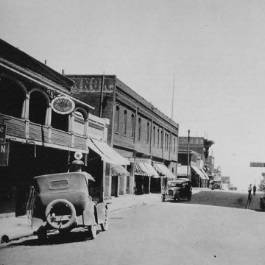[Source: Doug Frerichs, Arizona State Parks Foundation] — If state legislators stick to their latest budget plans, hundreds of thousands of state parks visitors are likely to have far fewer parks to visit next year, while recession-reeling Arizona communities could suffer major losses in parks tourism and money. At issue are House and Senate Budget Bills that would strip fee-generated revenues from Arizona State Parks, forcing the cash-strapped agency to close more parks or expend funds set aside by voters specifically for parks enhancements and community grants. In addition to parks already shut because of legislative raids on State Parks earlier this year, the bill could force closure of such scenic sites as Red Rock State Park near Sedona, Oracle State Park north of Tucson, Yuma Quartermaster Depot, Tubac Presidio, and other prized locations. Even Kartchner Caverns, the jewel of the state system, stands at risk.
In a cynical move, Senate leaders would confiscate State Parks fee-generated income, leaving the agency to rob the Arizona Heritage Fund to sustain a skeleton parks system. The Heritage Fund, approved by voters in 1990, sets aside $10 million annually from the State Lottery for grants to finance community parks, historic preservation, and conservation projects. Beyond cynicism, the latest budget schemes would strip away a portion of donations made to benefit state parks by private donors acting in good faith.
To her credit, Gov. Jan Brewer has proposed a more honest, pragmatic approach that would let State Parks keep its fee monies and not subvert purposes of the Heritage Fund. The governor also recognizes that State Parks — in addition to its superb recreational, historic and natural values — is an economic engine that regularly draws more than 2 million visitors a year and pumps $250 million in tourism spending into local economies. The governor also has appointed a Sustainable State Parks Task Force to recommend new ways of funding and maintaining such sites as Slide Rock, Riordan Mansion, Dead Horse Ranch, Lake Havasu and Kartchner Caverns state parks — places that annually draw huge numbers for fishing, boating, birding, hiking, camping, and pure enjoyment of our state’s great places.
State Parks is not an agency to be slashed when Arizona communities need tourism dollars. Despite this, the latest budget measures would repeat mistakes made earlier this year when lawmakers lopped the State Parks’ budget by $34.6 million, resulting in a 30 percent reduction in parks staffing, closure of three parks and reduced operations at six more. And all this on top of the fact that State Parks has had no general fund or capital budget increases for a decade.
Our state parks were bought and built by Arizonans over the course of half a century. They were enhanced and improved with major efforts of volunteers. They have provided two, and now three generations with experiences and memories of some of Arizona’s best places. Raiding the agency, stripping it of its small state general fund support, and forcing the State Parks Board to cannibalize the Heritage Fund are sure fire ways for legislators to destroy what’s good in government, hurt local economies, and leave the future with less. [Note: To read the full article, click here.]
Doug Frerichs is a board member and past president of the Arizona State Parks Foundation, a private, non-profit organization dedicated to advocating for and supporting Arizona’s state parks system. He lives in Scottsdale.



 Then they got the town itself to become the fiscal agent for a state grant from the Arizona Heritage Fund (private citizens can’t get these grants outright but can partner with municipalities). The grant would cover 60 percent of the project while Mary and Sally would finance the other 40 percent. But to get ready for the grant, which was to be dispersed as work was completed, the women had to spend a ton of money up front. So far, they’ve spent some $170,000, trusting that a hunk of that would be reimbursed by the grant.
Then they got the town itself to become the fiscal agent for a state grant from the Arizona Heritage Fund (private citizens can’t get these grants outright but can partner with municipalities). The grant would cover 60 percent of the project while Mary and Sally would finance the other 40 percent. But to get ready for the grant, which was to be dispersed as work was completed, the women had to spend a ton of money up front. So far, they’ve spent some $170,000, trusting that a hunk of that would be reimbursed by the grant.
You must be logged in to post a comment.